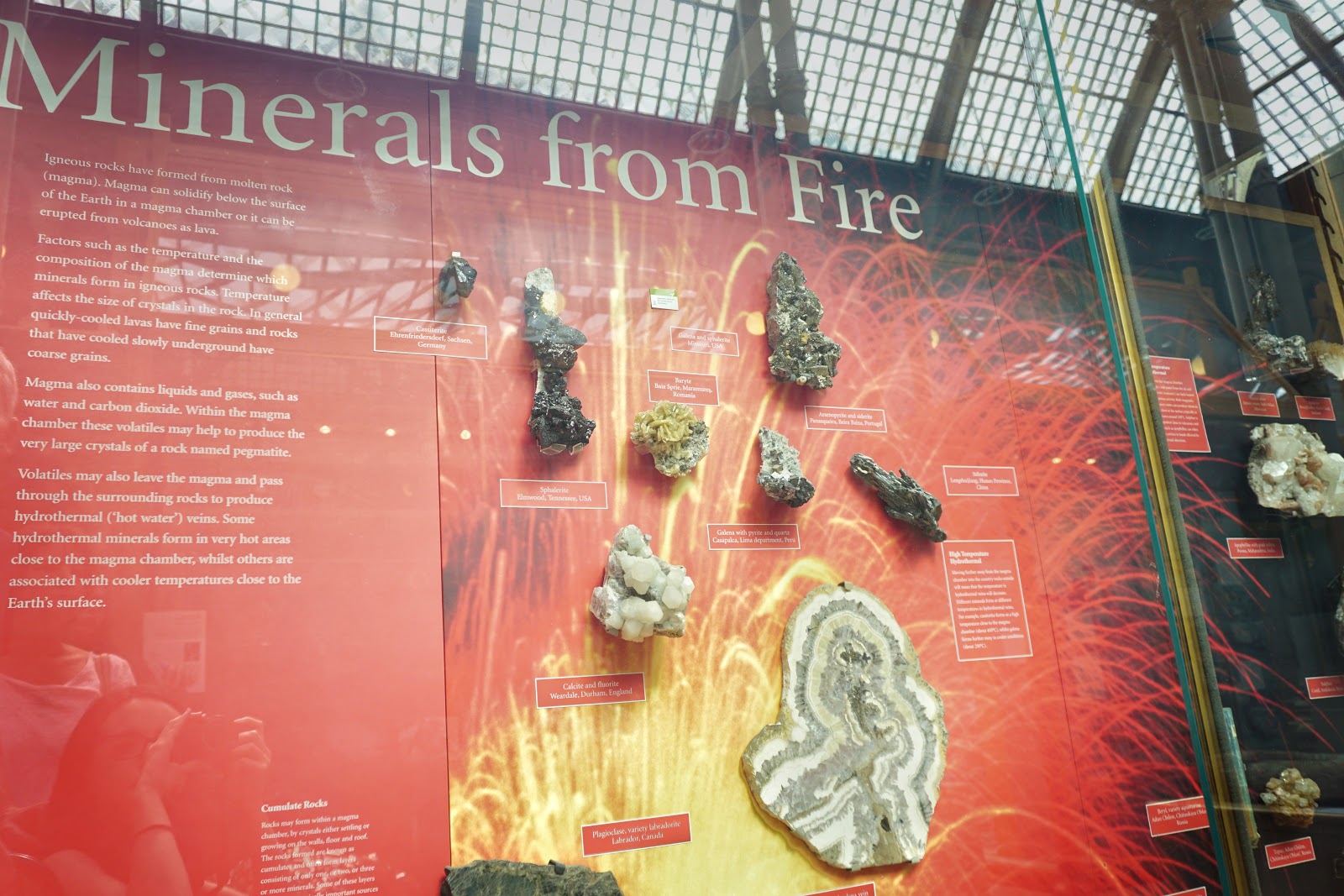The Natural History Museum, Oxford
This museum makes a little bit of a change for me. Normally I go to places that explore history, art or literature. Rarely do I go anywhere with a science focus. But, on the day in question, I was feeling a little more science inclined and the Natural History Museum was where I wanted to go. It ended up being a really good choice: I was feeling particularly unwell on the day that we visited and was nervous that the trip out would be too much for me, but the uncrowded displays meant that I coped surprisingly well, even with lots of children on their summer holidays running around!
Dinosaur skeletons, whale skeletons, meteor rocks; the Natural History Museum in Oxford has it all. And yes, of course, the famous Oxford Dodo. The displays were astonishing, and wonderfully informative for a science newbie like myself. I particularly enjoyed the display encircling the room which narrated the earth's changing makeup throughout history. The meteorite display was another favourite, although I did make a point to avoid any and all displays with insects or eight-legged creatures. And the building itself is a work of art, from the various marble pillars to the beautiful arched metalwork ceiling. I just love how the focus on science was incorporated into the building's very fabrics.
 |
| Photo by J. Bailey |
Dinosaur skeletons, whale skeletons, meteor rocks; the Natural History Museum in Oxford has it all. And yes, of course, the famous Oxford Dodo. The displays were astonishing, and wonderfully informative for a science newbie like myself. I particularly enjoyed the display encircling the room which narrated the earth's changing makeup throughout history. The meteorite display was another favourite, although I did make a point to avoid any and all displays with insects or eight-legged creatures. And the building itself is a work of art, from the various marble pillars to the beautiful arched metalwork ceiling. I just love how the focus on science was incorporated into the building's very fabrics.
The museum was a surprise favourite and I'll definitely be visiting more science-based museums in the future. It was particularly wonderful that there was plenty of space to manoeuvre the wheelchair (which we borrowed from the museum as I had only taken my mobility scooter on the trip and wasn't feeling well enough to drive it) and that none of the displays were too high to read. After we had finished wandering around the Natural History Museum we popped through the doors at the back into the Pitt Rivers Museum (blog post to come); before returning for a small lunch in the Natural History Museum's cafe (they had the most amazing coffee brownie).
Wheelchair 5/5:
There is a disabled entrance to the side of the building, with a lift up to the main exhibition halls. The main display hall is very open with lots of space between all of the displays for a wheelchair to get around. I feel like a mobility scooter would also manage this without any problems. However, I'm not sure whether it would fit into the lifts, I can't remember exactly how big they were. I also seem to remember the corridors leading in from the disabled entrance being relatively narrow.
Sensory Input 3/5:
It was tiring, as all museums are, but the building is very open, meaning that the noise and light doesn't get trapped, pressing in on you. This made it easier for me to deal with. The glass ceiling can make the museum very bright.
Food & Facilities 3/5:
There is a small cafe on the top floor with a nice enough offering. There are then accessible toilets near the disabled entrance.
Travel 3/5:
There are a few disabled parking bays just outside the wheelchair entrance (although the markings blend in with the ground, so they are difficult to spot). There are also a few pay and display spaces relatively nearby. Oxford has many Park & Ride services and their are some bus services from the train station. For more information go here.
Overall 3.5: Our travel time was around fifteen minutes in the car; we spent just over an hour looking around.
Overall 3.5: Our travel time was around fifteen minutes in the car; we spent just over an hour looking around.
*I currently have moderate ME, meaning I use a wheelchair pushed by someone else, and a walking stick. Please take into account your own physical capabilities when planning a trip, if you need to start small then start small. Look into what you can see nearby for when you're ready. Although, when at my best, I may be able to post every 1-2 weeks, that does not mean I am well enough to travel that frequently! Many of my posts come from a backlog of trips taken over the past few years.
All other photographs by Emily Bailey







